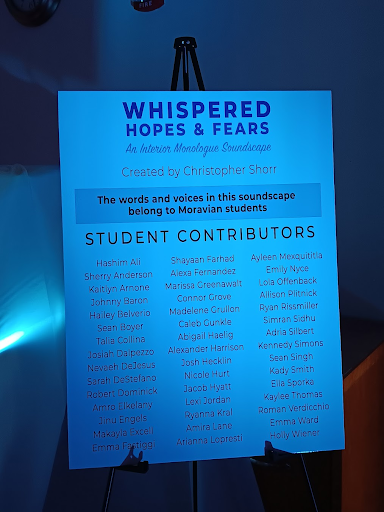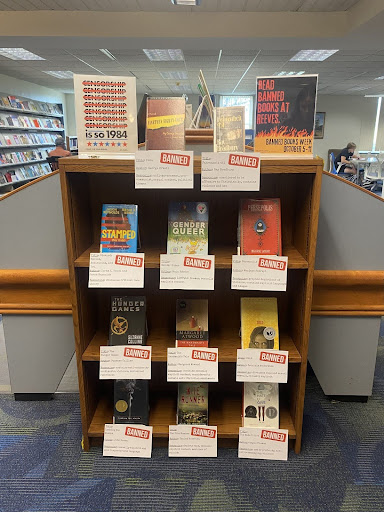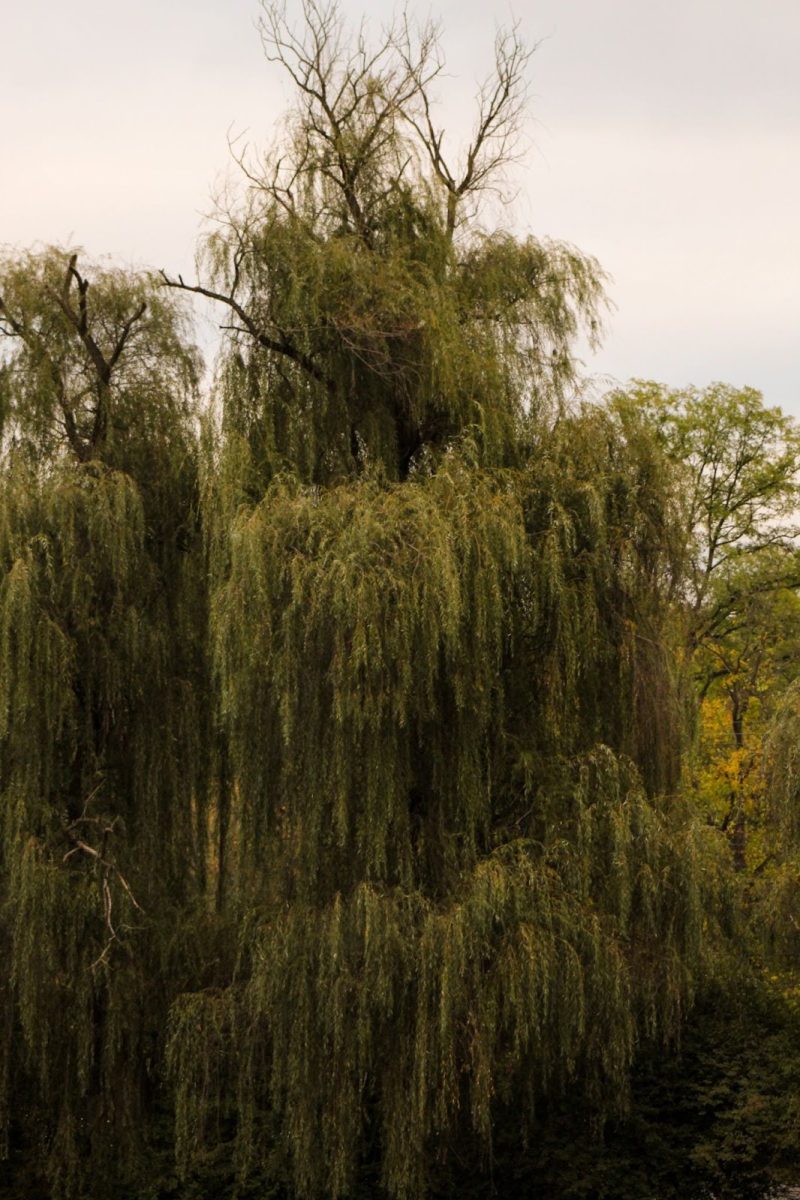
During the 11th annual Writers’ Conference, held on April 11 and 12 on the first floor of PPHAC, students, faculty, and community members came together to explore the role of storytelling in shaping conversations about social and environmental justice. This year’s theme encouraged participants to think deeply about the concepts of “outside” and “inside”— examining who tells stories, how those stories move between public and private spaces, and how writing can serve as a tool for justice.
One of the most immersive and thought-provoking experiences of the weekend was an in-person soundscape installation. This wasn’t just something to listen to; it was something to walk through, reflect on, and respond to. The soundscape featured original pieces written and recorded by students, each tied to the conference’s broader themes. As visitors moved through the dimly lit space, they were invited to contribute to a growing “community response art piece” by displaying thoughts, quotes, and reactions throughout the weekend.
When I hear the word “soundscape,” I usually think of the background sounds in movies or TV shows — the subtle audio that builds mood without taking center stage. That’s why this installation caught me off guard.
Instead of ambient noise or music, the soundscape was built almost entirely from student dialogue. Voices, thoughts, and stories became the focus, forming a kind of living, breathing audio collage.
From the moment I stepped into the room, I knew this would be something different. The space was dim, with only soft background lighting to guide the path. The darkness gently forced me to rely more on my ears than my eyes, making every sound feel more vivid and alive. Whispered voices echoed from different directions, creating an atmosphere that was intimate, dreamlike, and slightly mysterious.
What struck me most was the sheer diversity of voices. Each one carried its own rhythm, tone, and message. Some students shared personal challenges; others offered moments of joy, resilience, or curiosity. Though I couldn’t always hear every word clearly, many voices overlapped or whispered, the emotional depth was unmistakable. It was powerful to realize that each phrase, each breath, came from a young person with something important to say.
That said, I wish for a way to hear individual voices more distinctly. The overlapping whispers added to the aesthetic, but an option to isolate voices using headphones or an app would enhance clarity without taking away from the experience. This could also benefit participants who are hard of hearing or have sensory sensitivities. Adding QR codes with transcripts or audio selections could enhance the experience’s inclusivity.
And that ties into the deeper mission of the piece. Accessibility is a form of justice. If we want everyone to participate in these conversations, we should ensure that everyone has access to and can engage with the content. A small shift in design could help amplify all voices, not just the loudest or most easily heard.
Still, the installation achieved something rare: it asked us to pause and listen. In a world that feels constantly noisy and overstimulating, stepping into a quiet, reflective space filled with the voices of students was a grounding experience. It reminded me that the most powerful stories don’t always come with a spotlight and that sometimes, a whisper can be louder than a shout.
The soundscape was easily one of the most memorable parts of the conference. It blended art, activism, and student creativity in a way that felt both deeply personal and communally shared. I left thinking not only about what I had heard but also about the act of listening itself and how it connects us across differences, bringing us closer to understanding, empathy, and change.
What made it even more moving was the way students’ hopes and fears came through in their words. These are the things we carry with us daily as young adults: questions about our future, about who we are, and what kind of world we want to help create. College is such a defining time, and in today’s uncertain world, hearing those honest reflections felt raw and real. That vulnerability, that courage to speak even in a whisper, is what gave the soundscape its true power.




![The Downfall of Taylor Swift: AI, ‘The Life [and Demise] of a Showgirl’](https://comenian.org/wp-content/uploads/2025/10/unnamed-6-1.jpg)


